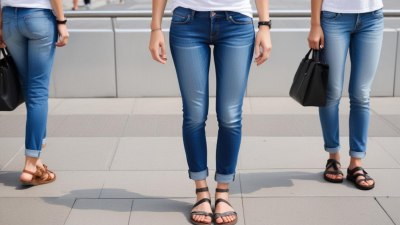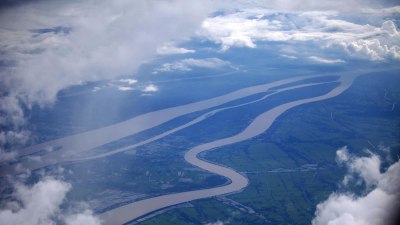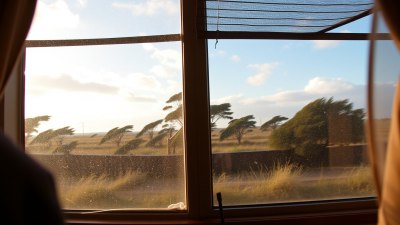The Science of Instantly Regretting Wearing Jeans on a Hot Travel Day
Explore why wearing jeans on hot travel days can lead to discomfort and regret.

This image was created with the assistance of Freepik
When the sun blazes down and temperatures soar, the very last thing you want to be wearing is a heavy pair of jeans. Yet, countless travelers make this mistake, often regretting their choice within minutes of stepping out into the heat. This article delves into the science behind clothing choices, the physiological effects of heat on the human body, and why jeans, in particular, can turn a day of exploration into a sweat-soaked ordeal.
The Anatomy of Jeans
To understand why jeans can be a poor choice on a hot day, it’s essential to consider their fabric and design. Most jeans are made from denim, which is a dense cotton twill fabric that can trap heat and moisture. Unlike lighter fabrics such as cotton, linen, or moisture-wicking synthetics, denim doesn’t allow for adequate airflow. This lack of ventilation can quickly turn into discomfort, especially if you are trekking through a city or waiting in long security lines at the airport.
The Human Body and Heat
The human body has a complex thermoregulation system designed to maintain a constant internal temperature. When exposed to external heat, the body activates sweat glands to cool itself down through the process of evaporation. However, wearing heavy or non-breathable clothing, such as jeans, can hinder this process. Sweat can't evaporate efficiently when it's trapped against the skin, leading to an increase in body temperature and a feeling of overheating.
Characteristics of Comfortable Travel Attire
What makes a garment suitable for a hot day of travel? Ideally, it should be lightweight, breathable, and moisture-wicking. Fabrics like cotton, linen, or special athletic materials are designed to promote airflow and wick moisture away from the skin. This allows sweat to evaporate more quickly, keeping the wearer feeling cooler and more comfortable overall. In addition to fabric, the style and fit of clothing can significantly impact how comfortable a traveler feels on a warm day. Loose-fitting clothing allows for airflow around the body, which can be crucial for temperature regulation.
Impact of Clothing on Mood and Experience
Wearing clothing that causes physical discomfort can also affect mood and overall travel experience. Studies have shown that when individuals are uncomfortable, they are more likely to experience frustration and negative emotions. This is particularly important when traveling, as the experience is often meant to be enjoyable and enriching. It is common for people to remember the discomfort of a hot day in jeans rather than the beautiful sights they visited. Thus, what is worn can not only affect the physical experience but also the emotional and psychological responses to the travel adventure.
Pareto Principle in Travel Clothing Choices
As travelers prepare for their journeys, it is worth considering the Pareto Principle, which suggests that roughly 80% of consequences come from 20% of the causes. In terms of travel clothing, choosing the right 20% of your wardrobe—items that provide comfort, breathability, and versatility—can significantly improve your travel experience. Investing in appropriate wear should be a priority for anyone looking to travel during hotter months. The right choice can lead to a comfortable, enjoyable day, while poor choices can leave you regretting your outfit choice early in the day.
Alternatives to Jeans
If you are someone who loves the look of jeans but recognizes the impracticality of wearing them during hot travel days, several alternatives provide the same casual style without the discomfort. Consider wearing lightweight chinos, breathable shorts, or even travel-specific pants with moisture-wicking technologies. These alternatives can provide a similar aesthetic while allowing your body to cool off and feel more comfortable.
In summary, while jeans may be a popular fashion choice, they can have significant drawbacks on hot travel days. From their fabric composition to their design, jeans can trap heat and moisture, leading to discomfort and even affecting a traveler’s mood. By understanding the science behind clothing, travelers can make informed choices that enhance their experiences. Opting for breathable, lightweight clothing can help prevent the instant regret that often accompanies wearing jeans in hot weather, allowing travelers to focus on enjoying their adventures instead.











